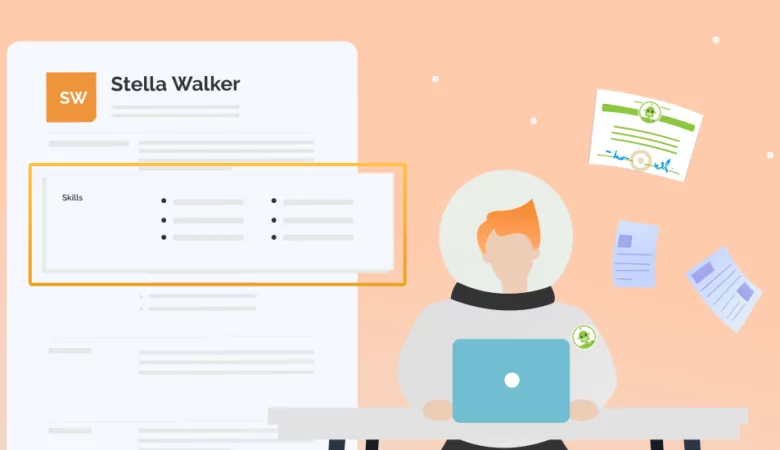A letter of interest can open up a variety of job opportunities for you. How can you write a great letter of interest that opens the door for any situation?

Tips for Writing a Persuasive Letter of Interest
Letter of Interest
One of the most unique types of job application letters is a letter of interest, also called a letter of intent, prospecting letter, or letter of inquiry. A letter of interest can help you find job opportunities that aren’t available to the general public. This means that letters of interest can help job seekers get a hiring manager’s attention even when there isn’t an open position. If you want to apply for a specific job title at a company that isn’t listed on job search websites, here’s what you need to know about writing a letter of interest.
What Is a Letter of Interest?
A letter of interest is a formal letter that you send to a hiring manager when you believe there may be an open position at a company, but you haven’t seen any job postings for that new job anywhere online. It essentially showcases how you would be perfect for a specific position without having a job posting to base your discussion on. It’s one way to put yourself out there and request an interview for a job opening that you believe you would be perfect for.
-
The Difference Between a Letter of Interest and a General Cover Letter
A letter of interest and a cover letter are both business letters that showcase why you’ll be good for a specific job. The difference between the two is that a letter of interest is sent in when you believe you have a skill set for a job posting that isn’t posted, whereas a cover letter is sent in alongside a resume for a job application. With a letter of interest, you may or may not send in a resume alongside your letter.
Format of a Persuasive Letter of Interest
The letter of interest format is generally the same as how you would write a cover letter, with a few differences. Before writing your own letter, craft a good salutation. Include your name and contact information, including phone number and professional social media sites, like LinkedIn. Address the letter directly using the hiring manager’s name, not a generic introduction like “To Whom It May Concern.” If you cannot find the name of the prospective employer, you may need to call the company, as this type of letter needs a direct address.
The letter of interest format is generally the same as how you would write a cover letter, with a few differences. Before writing your own letter, craft a good salutation. Include your name and contact information, including phone number and professional social media sites, like LinkedIn. Address the letter directly using the hiring manager’s name, not a generic introduction like “To Whom It May Concern.” If you cannot find the name of the prospective employer, you may need to call the company, as this type of letter needs a direct address.
First paragraph: Introduction
In the opening paragraph, you’re going to introduce yourself and outline a few of your best qualities. Approach this section as if you’re constructing the job description that you would see if you were writing this as a cover letter for a standard job opening. You want the hiring manager to know early on what type of position you’re seeking and who you are.
Second paragraph: Body
In your second paragraph, you can go over all the reasons why you’re perfect for the specific position you’ve outlined. It’s common for people to use bullet points in a letter of interest template, outlining specific skills, qualifications, work experience, and achievements that make them perfect for this role. If you’ve done any networking or informational interviews to learn more about the company and the job, this is where you’ll likely include that information.
Third paragraph: Closing statement
The closing paragraph will be your call to action, actively asking the recruiter to bring you in for an interview. The call to action in a letter of interest needs to be even more direct than the call to action in a cover letter because you’re asking the hiring manager you’ve contacted to go out of their way to bring you in for an interview. Showcase why you would be a great addition to the company, then request an interview to prove it.
How To Write a Good-looking Letter of Interest
You can write a letter of interest with the ResumeNerd cover letter builder. Because a letter of interest and a cover letter have so much in common, you can use this builder to create a great-looking letter of interest as well. Additionally, if you look through our cover letter examples, you’ll be able to find letter of interest examples that can help you craft a persuasive letter of interest that really expresses why a company needs to talk to you.
FAQ: Letter of Interest
A letter of interest should be about as long as a cover letter: between half a page and 3/4 of a page long, or about 250-350 words. If your letter of interest is shorter than half a page long, it might look like you’re underqualified and therefore unimportant to talk to. If your letter of interest is longer than 3/4 of a page, it might be too much for a hiring manager to read through. The sweet spot is right at around 3/4 of a page.
Although your letter of interest definitely needs to be an expression of interest in the job, you should still avoid looking desperate or like you’re applying to the job because of salary or perks. Maintaining an air of formality is extremely important in writing a letter of interest, so the letter should read formally, like a business letter.
Most of the time, you’ll want to write a letter of interest when a job is either currently vacant or about to be vacant. For example, if you find out from a friend working at a company that a manager has recently turned in their resignation letter, you may send in a letter of interest regarding that specific position.








